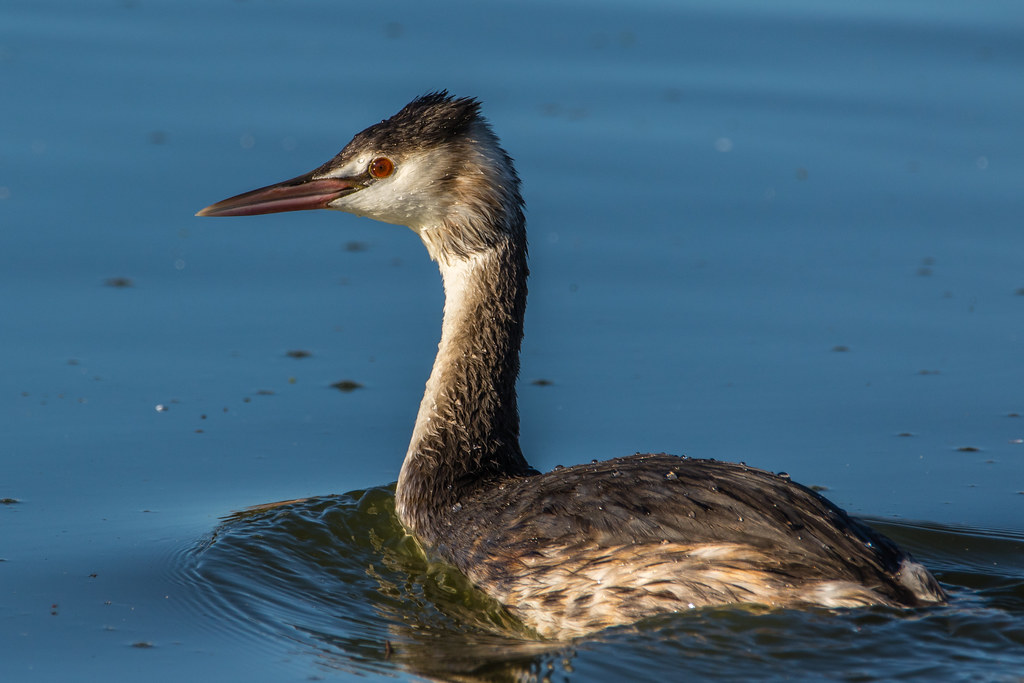Re: What is considered high iso
Again hard to really comment on either of these ,viewed and expanded on my I.pad ,but a couple of points are starting to surface ,first off your shooting with a knowingly dirty sensor ,that may or may not affect the images but worth a wet clean to put your mind at rest . Secondly these are SOOC images again showing your frustration ,but all RAW digital images are usually soft and will need p.p to bring them up to scratch ,it's also hard to tell from shots like these where your focus point is are you using single or multi point .
As you are probably realising there's so many variables in the mix it's going to be a hard one to pin down .also one thing I do know from wildlife as a subject matter ,canon sensors do not like trees/ messy backgrounds probably not such a problem on the latest sensors but a definite problem on older ones .
I also get the vibe that your getting frustrated with a perceived problem that may or may not be there .dont get tempted into changing gear to find that it's something your doing wrong or it's a lens problem .
Also both these shots are at f10 when f8 is usually accepted as the sweet spot for most lenses, your also shooting at a low ISO which in turn is slowing your shutter speed and even using a tripod could be inducing camera shake from wind movement ,again there's another variable is your tripod and head up to the job .
As you can see there's lots of things that could be causing a problem .pity your not closer as I really thing you need another person to help sort this out
Again hard to really comment on either of these ,viewed and expanded on my I.pad ,but a couple of points are starting to surface ,first off your shooting with a knowingly dirty sensor ,that may or may not affect the images but worth a wet clean to put your mind at rest . Secondly these are SOOC images again showing your frustration ,but all RAW digital images are usually soft and will need p.p to bring them up to scratch ,it's also hard to tell from shots like these where your focus point is are you using single or multi point .
As you are probably realising there's so many variables in the mix it's going to be a hard one to pin down .also one thing I do know from wildlife as a subject matter ,canon sensors do not like trees/ messy backgrounds probably not such a problem on the latest sensors but a definite problem on older ones .
I also get the vibe that your getting frustrated with a perceived problem that may or may not be there .dont get tempted into changing gear to find that it's something your doing wrong or it's a lens problem .
Also both these shots are at f10 when f8 is usually accepted as the sweet spot for most lenses, your also shooting at a low ISO which in turn is slowing your shutter speed and even using a tripod could be inducing camera shake from wind movement ,again there's another variable is your tripod and head up to the job .
As you can see there's lots of things that could be causing a problem .pity your not closer as I really thing you need another person to help sort this out
 I did think though that eliminating camera shake with a tripod and 2second timer, plus a reasonably fast shutter speed would help.
I did think though that eliminating camera shake with a tripod and 2second timer, plus a reasonably fast shutter speed would help. 
 I think I need to develop a better hand held technique. All my recent shots that I have posted on this thread have been taken using a tripod mind you. The Paisley Abbey one was handheld.
I think I need to develop a better hand held technique. All my recent shots that I have posted on this thread have been taken using a tripod mind you. The Paisley Abbey one was handheld. 

 I also know about forgetting to set focus to AF again too. Done that too many times!
I also know about forgetting to set focus to AF again too. Done that too many times!
Comment